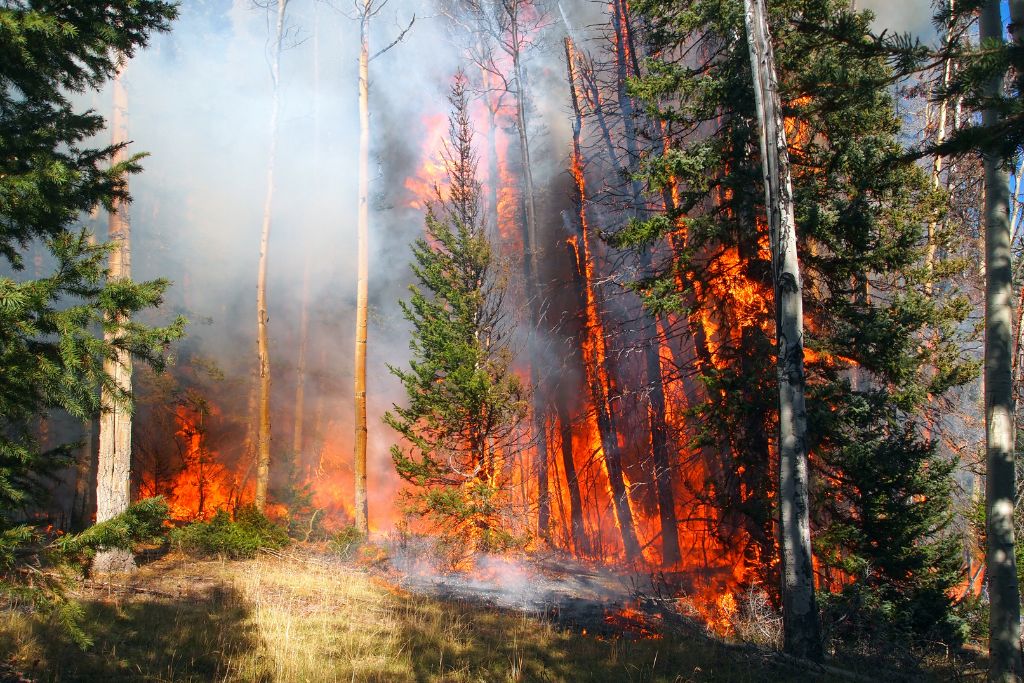Sustainable forest management is critical to preserve the nation’s forests for future generations. Implementing eco-friendly forestry practices is equally important for preventing wildfires. Forests are one of the planet’s most essential natural resources, from providing oxygen for humans to boosting economies to creating a habitat for millions of species. As climate change and human activity increase the frequency and intensity of wildfire events that threaten forest survivability, developing sustainable forest management plans can help with wildfire prevention.
—
Importance of Forest Management
Forest management is crucial to mitigate the onset of wildfires. In the United States, wildfires have caused acute land area damage, with burned acreage rising from 5% to 23% annually between 1984 and 2020. More recently, the 2020 wildfire season proved particularly alarming, as 58,950 fires destroyed more than 1 million acres (405,000 hectares) of forest, with California being the most susceptible to burns.
More than 2 million properties were at high risk of destruction from California wildfires in 2021, accruing hundreds of millions of dollars in environmental, social, and economic damages, uprooting lives, and destroying livelihoods. In fact, the state’s annual fire suppression expenditures rose to US$401 million in 2019, up from $25 million in 1989. As global warming drives extreme heat waves and prolonged droughts, experts predict wildfire events will become more widespread.
However, the weather isn’t the only contributing factor. 89% of wildfires occur because of irresponsible human activities, such as lighting campfires poorly, using malfunctioning equipment, discarding cigarettes, and committing arson. To meet the forests’ needs and prevent severe fire events in the future, the development of sustainable forest management is necessary.
You might also like: What Causes Wildfires?
5 Forest Management Strategies for Wildfire Prevention
Sustainable forest management focuses on fire prevention strategies to protect the land from fire outbreaks and control the spread. Here are five methods forest managers can use when developing sustainable forestry practices for wildfire prevention.
1. Reducing Vegetation
While removing vegetation may seem counterproductive to maintaining healthy, thriving forests, crowded trees, shrubs, and other flora can fuel the spread of fires. Forest managers may create fire breaks – open land areas cleared of wild vegetation and natural debris – as part of their sustainable forest management plans.
The job often requires the use of heavy equipment. For example, brush cutters can cut through dense grasses and more extensive vegetation, helping managers tackle land clearing more efficiently. Additionally, front loaders allow crews to transport the debris to another location.
2. Spacing Trees Properly
Planting trees with ample space between them for growth can also help prevent the spread of a wildfire. The expected canopy diameter often determines tree spacing. For example, it is best to space evergreens 6 to 10 feet (1.8 to 3 metres) apart, while 4 to 8 feet (1.2 to 2.4 metres) is an adequate distance for deciduous trees. When trees have some separation between them, wildfires are easier to suppress and have less chance of spreading.
3. Tree Thinning
Tree thinning is a crucial part of sustainable forest management and removing dead or diseased trees helps create more space between susceptible vegetation. Wildfires leave a wake of destruction in their paths and debris buildup can spark another event if left alone. Regions with less precipitation – such as western states and parts of the South –benefit the most from tree removal. Even the slightest spark can ignite a dry forest.
Tree removal and thinning are currently underway at Caribou-Targhee National Forest at Yellowstone National Park. Crews comprising scientists and land managers have initiated efforts to remove trees considered high risk for widespread forest fires.
You might also like: The Evolution of Wildfires Mitigation in North America
4. Plant Resilient Trees
Maintaining optimal forest health should be the top priority when developing sustainable forest management plans for wildfire prevention. Therefore, forest managers should focus on planting fire, drought, and rot-resistant trees.
Root rot may be isolated among a small cluster of pine trees or scattered throughout the forest. Most of the time, an infection causes tree die-off. However, the more dead trees you have standing, the greater the chance of fire outbreaks.
For instance, 75% of merchantable hardwood timber dies from heart rot in the South – the disease usually speeds up decay and leads to hollowed insides and breakage. Forest managers can help prevent the onset of heart rot by planting trees that are well-adapted to the area.
5. Monitor for Pests
As the planet warms, pest infestations become more prevalent. Much like forest diseases, pests can cause significant harm to vegetation and hinder woodland health. Bark beetles are a considerable culprit, infiltrating trees already under high stress and making them more vulnerable to disease and die-offs.
An integrated approach to pest management is most suitable for sustainable forestry. It is essential to target an insect’s weak points throughout its life cycle and issue proper forest care. Adaptive control that examines the current forest conditions develops sound management decisions and sets measurable benchmarks is an ideal way to retain forests and prevent wildfires.
Protecting Forests With Sustainable Wildfire Prevention
Sustainable forestry may only prevent some climate change or human-induced fire events in the nation’s forests, but it can avoid worsening fire damage. With a well-developed fire prevention strategy, forest managers can better plan for and mitigate wildfires and protect our forest resources.
You might also like: Top 12 Largest Wildfires in History


















